Get posts by email
How To Make Simple Soap ~ A Video Tutorial
January 17, 2011
Last September our family got a teeny, tiny video camera. We wanted this mostly for recording and producing video of our outdoor adventures, like this one of Damien's seven day hike in Wyoming last fall.
Also, we have a theatrical daughter (number 3) who we thought might appreciate a tool of the trade.
With a new little video camera in hand (both Brienne's and mine) I was inspired to make a video of the soap making process from start to finish.
The recipe is for my Simple Soap, the soap I use for making Homemade Laundry Soap and cleaning bars.
If only video production was as easy as making soap!
After taking the actual video I had to edit, edit and edit to produce something that you all might want to spend your time watching (and hopefully learn from).
Needless to say it only took me four months to share this with you but I hope it will help you along your soap making journeys.
Simple Soap Recipe (shown step-by-step in video):
- 48 oz (3 lb) tub of vegetable shortening - the kind you buy at the grocery store
- 6.5 oz lye - see Suppliers list at Homemade Soap & Body Care
- 18.5 oz water, distilled is best
Complete directions on video.
This is a photo of the finished bars, cut and cured. It turns a little pink. Don't know why.
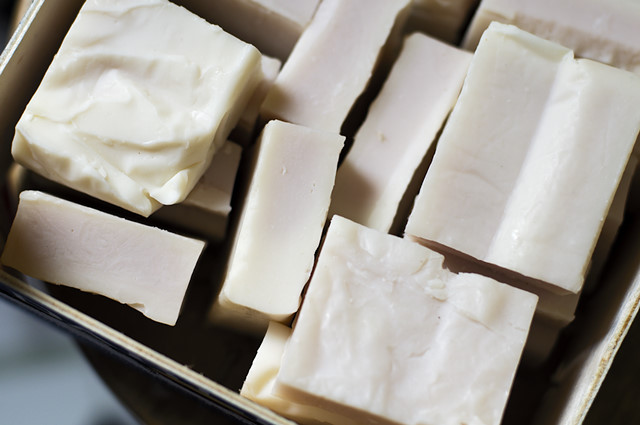
Why Having Friends with Scientist Dads Is Cool
When my friend Renee (yep, same name) read that my soap turned pinkish and I didn't know why she shot a question off to her scientist father who had this to say:
Manganese (Mn) is often pinkish when it forms manganese sulfate, so my best guess is there is some manganese in the lye as a minor “contaminant.” Or there may be dissolved manganese in their water that then can form manganese sulfate in the recipe.
Well, who knew? He does I guess. Thanks Renee's dad for enlightening us all. By the way, the photo above emphases the pink and in the bars in real life it's barely noticeable and not at all once I start using them.
Filed Under
Resource Library
-

Karen on Jan. 17, 2011, 1:16 p.m.
What an interesting and easy-to-understand video. This is the first time I've even considered trying to make soap. Would you use this recipe strictly for laundry or also for bathing, etc?
-

Karen on Jan. 17, 2011, 1:18 p.m.
Whoops, I just re-read your post which answers my question about what you use this soap for. Thanks for sharing the video.
-

renee on Jan. 17, 2011, 1:46 p.m.
Mom, you can use this soap for anything. I use it for cleaning (and not showering etc.) because it's less moisturizing than my body bars and is less pretty. My body bars (the ones you get) are more expensive & more time consuming to make because they have speciality, harder to find oils and the essential oils that give the bars their lovely scents.
Soap is soap. And can be made with any oil. But different oils will produce different characteristics - lathering, moisturizing, hardness of bar etc...
-

Brenda on Aug. 23, 2012, 5 p.m.
HI Renee,
I finally made the simple soap recipe yesterday, and I was so excited to cut my soap 24 hours later. Thank you so much, Renee. I noticed bubbling when I mixed in the lye water in the melted shortening. The stove was already turned off and both mixes were at about 110 degrees? Would this bubbling have any adverse effects on the soap? Also, can I use this soap as a base for a liquid hand/diswashing soap, adding essential oils for moisturizing?
-

renee on Aug. 23, 2012, 6:46 p.m.
Brenda, I have no idea about the bubbling. Yes, you could use this soap as a base to make liquid soap. I bet there are tutorials online to do that. I personally don't make liquid soap so I don't know how. Essential oils are not added for moisturizing. EO's are added for their botanical and aromatherapy (for lack of better word) properties. The carrier oils (shortening, olive, palm, etc.) are the oils that add moisturizing qualities. Certain oils are more moisturizing than others. This simple soap recipe is not particularly moisturizing. It is not bad for your skin and will lather quite nice (I'm currently using some as a shampoo bar) but it's not a rich moisturizing bar. Please see this post for more information on oil properties and soap making.
-
-
-
-
-
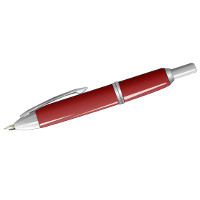
tara on Jan. 17, 2011, 1:34 p.m.
I just watched the video. I am definitely going to try this. Thanks.
-

renee on Jan. 17, 2011, 1:47 p.m.
Good!
-
-

tenaciouslace on Jan. 17, 2011, 4:22 p.m.
Oh, this is fantastic! Thank you for making the video. I think I might be ready now to make some!
-

Julie Sanchez on Jan. 17, 2011, 5:30 p.m.
Great video! This makes it looks so simple. Thank you!
-
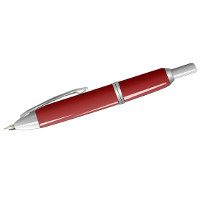
Sarah@BlueCastle on Jan. 17, 2011, 9:26 p.m.
Thank you so much!!! I know this took a lot of time and effort and I am so thankful you made this. I've been trying my hand at soap and wanted to find a good recipe to use for laundry, washing dishes and cleaning. And the fact that you made a video too is just awesome.
-

Hillary on Jan. 18, 2011, 3:52 a.m.
Thanks so much Renee.
I'm really interested in your video editing journey. What are you using to edit? I'd like to make some videos, but get overwhelmed at the editing part.
-

renee on Jan. 18, 2011, 11:20 a.m.
iMovie is what we use for video editing.
-
-

Cori on Jan. 18, 2011, 4:18 a.m.
Thanks for the refresher course! The last time I made soap was just before we moved, and I'm ready to make more this week, so the timing was great! I've always just poured all the lye in at once - don't remember that part of the instructions, but it's always been ok. Miss you guys :-)
-

nicola@which name? on Jan. 18, 2011, 5:30 a.m.
I have to get to bed now, but you KNOW I will be back to watch this later. Bookmarking... THANK YOU Nicola
-

Francesca on Jan. 18, 2011, 8:45 p.m.
I'm super interested in this video (and the previous), but videos play excruciatingly slow on my connection, stopping for minutes in mid sentence etc, and I won't be able to get to it before the weekend when I have the time to play it at least twice. I played just the very beginning up to the point where your arm reaches out for the shortening (took 3 mins to get there, and it stopped) because I wanted to hear your voice - so nice!
-

Spring on Jan. 19, 2011, 1:56 a.m.
Woohoo! I just made my first batch of soap! Thanks for the helpful video- it took the "scare" out of it for me. My tools are now sitting till tomorrow when I will clean them! (Thanks for the cool tip on clean-up!)
-

Elizabeth on Jan. 24, 2011, 8:09 p.m.
That is a great video! Well done, and perfect timing ;) I have everything I need to make the soap except Lye, still looking for a local store to have it. One question I had please. How do you use it for dish washing? I have been making laundry soap for a while now but have yet to find a good dish soap. Do you melt it down into a liquid? Thank you :)
-

renee on Jan. 24, 2011, 8:12 p.m.
Elizabeth,
I sits there as a bar of soap and we rub it on the cloth or sponge and onto the dishes.
I talked about that here. Just like washing yourself with a soapy cloth in the shower.
-
-

Elizabeth on Jan. 24, 2011, 10:26 p.m.
Thank You So Much! :)
-

renee on April 14, 2011, 5:49 p.m.
The Whimsical Housewife writes about her experience using this video to make soap - Adventures in Saponifcation. Way to go Elizabeth.
-

Erin on April 18, 2011, 2:42 p.m.
I LOVE MAKING SOAP!!!! Last Spring I made ONE HUNDRED BARS for personal use and gifts. It is GREAT and I only have FOUR bars left ... guess I need to make some more very soon. =)
-

renee on June 7, 2011, 5:14 p.m.
I got an e-mail question from a friend about the cooling of the lye and the heating of the oils.
Specifically, what if the lye/water mixture cools down faster than the rate of the heated oils cooling down (remember, the oils have to be heated to melt but then must cool down to mix with the lye/water) or vice versa.
Here's my answer:
If this happens to me I stick the jar of lye/water or pot of oils (whichever I need to cool down fast) in a sink of cold water to try to bring the hot one down to the temperature of the cool one. Or if it's winter I might stick it out in the snow for a few mintutes.
-

Ellen on Sept. 14, 2011, 10:30 p.m.
Hi Renee!
Quick question. When I popped over to Simple Notebook to read her posts on soap, she mentioned that you have to use a stainless steel pot or the lye will react badly. My pots are all Calphalon (15+ years old from my wedding!) I can scour the thrift stores for stainless steel, but thought I'd ask you first.
Thank you!
-

renee on Sept. 14, 2011, 11:19 p.m.
I use glass to mix my lye and water. Then for mixing the lye/water with the oils I use stainless steel. I have no idea about Calphalon. Sorry I can't be of more help.
-

free accounting advice on July 19, 2013, 7:16 a.m.
That is really interesting, You're a very skilled blogger. I have joined your rss feed and look forward to in the hunt for more of your fantastic post. Also, I have shared your web site in my social networks
-
-

Ellen on Oct. 2, 2011, 1:20 a.m.
I did it! My soap is all tucked in and I can't wait to see it tomorrow night. It didn't come to trace like yours, or perhaps I didn't continue blending long enough. I wonder if it's because I'm at altitude? I'm curious to see if it worked anyway. It was thick, but not as thick as yours. In either case, I'm excited and ready to make a fancier batch. Off to put some soap-making books on hold at the library! Thank you SO MUCH for such a clear and simple tutorial! I had it playing the whole time. :-)
-

Ellen on Oct. 3, 2011, 2:37 a.m.
It worked! It's cut and curing now. I can't wait til Halloween - when it will be ready! Thank you thank you! I think I'm hooked!
-

simple soap on Nov. 17, 2011, 3:14 a.m.
Well, you've done a very great simple soap video..Now I can make my own soap..Thanks for sharing this video.
-

Anonymous on Nov. 22, 2011, 3:34 p.m.
Renee,
Thanks for the great video...just made my first batch of soap!
I'm an ophthalmologist...so I just wanted to mention about Lye since you commented on it in your video. As you likely know, Lye, more so than many other chemicals, can cause a severe sight-threatening reaction when it gets into the eye. It can burn into to the conjunctiva and cannot be easily removed, and then leaches out until the doctor can pick it out. It can then cause scarring of the conjunctiva and loss of vision through a variety of mechanisms. So....please always be careful, using goggles, including those people/children who are watching/assisting in the process. I agree with what you said about clothes and skin, etc...it's likely not as big of a deal...but if it gets in the eye, particularly in the solid form before it has mixed with water then it is a big danger. Let your viewers know :)
Thanks!
-

Jessica on Dec. 5, 2011, 3:26 p.m.
This looks so simple, I'm so inspired to try my own! I'm wondering though, what can be added to make this usable for bathing etc? I love the simplicity of your recipe compared to others i've seen and seems like with just the shortening could be an affordable option.
-

renee on Dec. 7, 2011, 12:39 p.m.
Here's the great news Jessica - this soap is absolutely usable for bathing and for skin as is! The thing you gain from using a combination of more expensive oils is just better moisturizing and lathering properties. But any plant or animal based oil can be made into a usable soap. If you want to add just a bit of luxury to your bar you could add some lavender essential oil, one of the more common and cheaper EO's, and that will give your bar a beautiful scent without costing you a lot. Happy soap making!
-
-

Christy on Dec. 10, 2011, 6:18 p.m.
Hello Renee!
Thank you for taking the time to post this video. I have always wanted to make soap, but it always seemed somewhat difficult.
I noticed in the video you advised us if we wanted to out oils or leaves into the soap, we do so during the trace process. What would be the approximate amount of oil we should use in the soap or is it up to our discretion? Also, what type of leaves would you recommend us using and why?
BTW...thank you so much for posting the lip balm receipt...I have went and purchased everything that is required to make the balm and will be doing so tomorrow.
I enjoy your recipes and your many stories.
Thank you so much for sharing...SMILE!!!
-

renee on Dec. 11, 2011, 11:51 a.m.
In my Simple Soap I don't add any essential oils or botanicals. I mention it in here so you can see the point when it happens if you decide to add EOs and botanicals to another soap you wish to make. As for how much EO to add, I suggest you read some of my recipe/ingredient posts, you'll find those on my Soap & Body Care resource page, to get a sense. I honestly don't know the percentage off the top of my head but I know for about 90-100 oz of oil I use 4-5 oz essential oil. See also the recipe in 4 Steps to Making Homemade Soap. In that one I use 86 oz of oils and 4 oz. EO. What kind of leaves? Did I really say "leaves' (ha, ha!)? If so, what I mean is botanicals or natural plant products that you would add for their healing or "beautifying" affects. Take a look at recipe/ingredient posts to get a sense of what I add. It really depends on what I'm trying to achieve in the soap. A few of my favorites to add are:
cornmeal - a great exfoliant
powdered green culinery herbs (dill, parsley, rosemary) - for color
calendula - almost always in there somewhere, usually infused in the oil, sometimes added as flower petals
cocoa and ground cloves - to produce a dark brown color
-

Christy on Dec. 12, 2011, 11:57 a.m.
Thank you so much...SMILE!!!
-
-
-

Christy on Dec. 10, 2011, 6:23 p.m.
My apologies Renee...is this soap mainly for cleaning vs using as body soap?
-

renee on Dec. 11, 2011, 11:53 a.m.
No apology necessary. I personally don't use it for body soap because I like using decadent soap on my skin (smile). But you could use it for body soap. Please see this comment also.
-
-

Miranda on Dec. 11, 2011, 8:08 a.m.
Hi Renee, I am so happy I came across your blog. I have been making laundry soap for a while now but I use Fels Naptha soap and can't wait to make my own bar soap to replace it. I have been looking into making my own dish soap, shampoo and body wash, I came across a recipe to melt bar soap and add water and oils to it and I was disappointed with the outcome, I can not wait to try some of your recipes. I have a slight problem overcoming no lathering of my soaps and was wondering if the simple soap lathers for dish cleaning? Also would the simple soap recipe work in making a liquid laundry soap? Adding water and melting it all down? I have been using powder for a long while but was considering switching to liquid. Thank you so much for sharing your wisdom.
-

renee on Dec. 11, 2011, 11:41 a.m.
About the lather... Miranda, your question about the lathering is timely. Before we moved I would have said it lathers no problem. The water would turn a little milky but there were suds and if it wasn't sudsy enough I would just rub more on my cloth. I used our own simple soap bar for washing dishes for quite a few months. Since moving it's been a different story. The water here at our new place is different. It's well water vs. treated town water (and other regional differences I'm sure). The simple soap does not lather the same for washing dishes. I was quite dissappointed by this and switched to store bought liquid soap for the time being. It also leaves a film in the sink. The body bars I make lather great. Though not the big bubbles I'm used to. I'm not sure what kind of residue they are leaving in the tub but it's no problem to scrub off every once in a while (I'm not a compulsive tub cleaner) with baking soda or borax. So, I think it really depends on what your water is like. You can make a batch for laundry soap and try some for dish washing to see if it will work for you. I have never made liquid soap. So have no experience to share there. I always add boiling water to my laundry mix and whisk it good to dissolve everything before adding it to the laundry. My washing machine is in the kitchen, this is easy to do.
-
-

Elizabeth on April 11, 2011, 2:25 a.m.
So excited! I set up your video tutorial on making soap, assembled all my items and made my first batch of basic bar soap yesterday! I used only crisco as I wanted to make sure I could do it before I used any other types of oils. I added Sweet Orange and Cinnamon Leaf essential oils. The bars are cut, and curing. They smell so good! I don't know how I am going to wait the whole 3-4 weeks to use it. Thank you for sharing your wisdom on your blog! I love that I could have your video on in the background as I was working.
-

renee on April 11, 2011, 2:12 p.m.
Thank you so much for sharing this with me. This kind of feedback makes my day! You made soap, that's awesome. Just as a heads up orange and cinnamon can be irritating to sensitive skinned folks (like my husband). I love them but just want to let you know this in case you find it irritating and think you did something wrong in the process.
-

Elizabeth on April 11, 2011, 7:06 p.m.
good to know! thanks! I probably would have been worried about it. I was planning to use it for Laundry and dish soap. I am planning to make a batch with coconut oil and palm oil soon. Would you suggest some soothing for the skin that I could add instead for fragrance? I would like to make some to use for my babies (3yrs & 8months)
-

renee on April 14, 2011, 1:34 p.m.
I would stay fragrance-free for your babes. But if you want something soothing and non-irritating lavender is nice. Speaking from my own experience. Lavender EO might bother some people but I'm not aware of it.
-
-
-
-

April on Dec. 29, 2011, 6:33 a.m.
Thanks so much for posting this! It was very helpful and makes soapmaking seem a little less intimidating :) I have a question, can you use the same pot to make laundry detergent in, or would you not recommend that because of the lye?
-

renee on Dec. 29, 2011, 11:27 a.m.
I use my same pots for both cooking and soap making. So I think you could use the same pot for laundry detergent making.
-
-
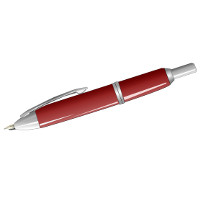
Lisa on Jan. 2, 2012, 12:51 p.m.
You say 18.5 ounces of water...is that weight or volume?
-

renee on Jan. 2, 2012, 1:10 p.m.
weight
-
-

fatima on Jan. 7, 2012, 3:44 p.m.
what about the weight of the measuring cup? i mean how do u do when u measure the lye and water... so your scale marks only the ounces and not the complete weight of the measuring cup
-

renee on Jan. 7, 2012, 3:51 p.m.
You need to subtract the weight of your measuring utensils. My scale does this for me with a tare function. If yours does not, you need to measure your cup (or container you are weighing in) first and subtract that weight from the total.
-
-

Sarah Johnson on Jan. 25, 2012, 3:12 a.m.
Hi! I am excited to try this! I have soap I need to use first that I've had for YEARS. Although, really I should make it and let it cure while I still have soap.... :) Can you hear the justification??!! I have watched the video but I wanted to clarify one thing. You talked a little bit about saving certain utensils just for soap and some things not. I wondered if it's just the plastic and wood you wouldn't want to absorb the lye? And it's okay to reuse the glass jar, measuring cup and steel pot? I hate to be overly cautious, but of course my family and I don't want to eat lye. Thank You!
-

renee on Jan. 25, 2012, 11:41 a.m.
Yes, plastic and wood I reserve for separate uses. Glass, stainless steel can be used used for soapmaking and cooking. It's ok to be overly cautious when you're dealing with lyel (smile).
-
-

christine on May 21, 2012, 10:06 p.m.
where can i buy the Lye?
-

renee on May 22, 2012, 7:45 p.m.
That really depends on where you live. I have some resources listed on FIMBY's homemade soap and body care page. I've also written about that here.
-
-

Jaime in Medellin, Colombia on June 27, 2012, 5:55 a.m.
I have 3 molds that are designed for 6lbs loafs each.
How much do I need to adjust your recipe to get 18lbs of soap?
Thanks,
Jaime in Medellin
-

renee on June 27, 2012, 12:14 p.m.
I don't know.
-
-

Marla on Jan. 13, 2013, 2:13 p.m.
Hi Renee,
I'm hoping I can still get an answer to my question even though this blog is over a year old.
I have rendered pork lard that I would like to use for making some soap. In using your recipe, would I still use 3 lbs. in place of the shortening?
Thank you so much!
Marla
-

renee on Jan. 13, 2013, 3:22 p.m.
Marla, you can absolutely use this recipe with rendered pork lard. However, you will need to recalculate your lye and water. This is easy to do. You can find links to lye calculators on this page.
-
-

Marla on Jan. 16, 2013, 11:55 p.m.
Renee, When I clicked on the link in your reply it took me to your homeschooling page. Is this the correct place I need to be? And thank you for replying. I was afraid because it had been so long.
-

renee on Jan. 16, 2013, 11:58 p.m.
so sorry! All fixed now!
-
-

Liz on Jan. 20, 2013, 3:38 p.m.
Thanks for this tutorial! I made my first batch of soap following your instructions and it worked great! Since it made such a large batch of plain soap, I have been having fun rebatching it!!
-

Angie on Jan. 26, 2013, 6:45 p.m.
Renee,
I wanted to take a moment to THANK YOU for taking your precious time to post this video. I have always wanted to try soap-making but was extremely intimidated to try after hearing about "Soap-Making Horror Stories"! After seeing on your video how simple it is to make, I feel confident on trying your recipe. I will also heed the precaution posted by the Ophthalmologist about eye protection.
Just one question: can other vegetable oils such as coconut oil, shea butter, or cocoa butter be substituted in even amounts in place of the vegetable shortening, or do I need a lye calculator?
Thanks again!
-

renee on Jan. 26, 2013, 11:08 p.m.
Whenever you change the oils you need to recalculate your lye and water amounts using a lye calculator.
-
-

Carol Thompson on April 25, 2013, 2:55 p.m.
I know this sounds crazy but we were blessed with a barrel of reclaimed oil from the local donut shop, kind of thought I might make my first million with glazed donut scented soap, but once the chemical reaction happens it no longers smells like donuts.
We shred it and use it for laundry soap in my HE machine, and have sold bars at farmers market for years, it is the only soap we use at the house. No poision ivy here!
-

renee on April 25, 2013, 2:58 p.m.
That's fabulous! I love it.
-
-

Jackie on May 22, 2013, 1:54 a.m.
If I wanted to add some EO such as just lavender, how much would I add for this recipe? Thanks!!
-

Gloria on July 7, 2013, 1:36 p.m.
Re the pinkish color. I don't think it's the lye at all. In another video, a soapmaker said that every time she add shortening to the soap blend it turns pink so it must be something that's in the glut of chemicals in commercial shortening that reacts with the lye to add color. That's why I never eat shortening, only use it for soaps.
-

renee on July 7, 2013, 3:17 p.m.
Thanks Gloria for adding this.
-
-

moira casadei on Nov. 3, 2013, 12:08 p.m.
Very confidentially Renee.....using "shortening" in your soap making video was a shocker! Shortening is hydrogenated, chemically changing the fat to a product that is toxic to the human body, and certainly not a real food product that can be digested, therefore risk of heart disease. I am a soapmaker, teach soapmaking and bring to my learners attention that rendered pastured-raised fat back from pigs (lard) or cows (tallow) is the only benefical fat allowed in my soap recipes (in addition to other oils and butters). Yes, I do render the lard myself, from my daughter's heritage pigs leaf lard, it is a back-breaking, tedious process.....but a premium soap is the results!
-

renee on Nov. 3, 2013, 1 p.m.
Moira, thank you for sharing your experience. My aim in this video is to share a recipe with people that is very accessible and simple. And thankfully people won't be eating the soap, which siginficantly reduces the heart disease risk. Most beginner soap makers don't have easy access to "rendered pastured-raised fat back from pigs (lard) or cows (tallow)" but they can buy crisco at the grocery store. I'm certainly not suggesting they eat it, nor am I suggesting this is the best soap recipe for skin. It's just what it is - a simple recipe. I love making premium soaps also, though I use vegetable oils, which I don't have render myself.
I didn't understand the distinction between lard and tallow, one being from pigs and the other from cows. Thanks for explaining that.
-
-

Jeanne Boyer on July 1, 2014, 2:04 p.m.
Thank you for this recipe!!!
-
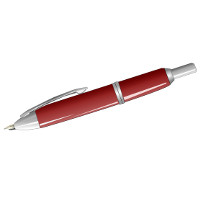
ex army girl on Jan. 18, 2015, 8:57 p.m.
~~18 Jan 2015
Dear Ms. Renee & Fellow Readers,
I am not really sure how I found your site Ms. Renee--I think another blogger mentioned you & so here I am. I have seen many posters ask about using this soap recipe for bathing, etc.--super simple & a WONDERFUL video to show the process beside--THANK YOU very much for the time & effort you put into this for our benefit!! I just wanted to add my meager two pennies worth in response to those questions.
It is really simple honestly--run this through a lye calculator like the one found at "soapcalc.net"; across the top of the page is the lye calculator function. You can use the 'superfat' amount of a basic 5% (or more if if the next batch you want to be more moisturizing still), using the same amount---3 lbs--of shortening or lard & it will tell you how much lye to use & the water amounts for this newly adjusted recipe. This will then give you a soap that feels better on your skin if you want just one basic soap recipe with the minimum amounts of costly ingredients (not that there is ANYTHING wrong with adding ANY other oils), changing only the amount of lye from one batch to another.
On the topic of using what you already have around the house for a mold, I LOVE LOVE LOVE the idea of a lined box. That is GENIUS & who cares because you are just going to grate it for laundry or put by the sink!!! Thank you for the great ideas you are willing to share!!
-

Frederica on Dec. 15, 2015, 5:47 p.m.
Hello is that all of the water you have to put in with the lye? See that's what I don't understand about soap making how much water lye oils go with what Say if I want to make 6 bars of soap how do I measure the amount needed I would like to know if you have time can you kind of talk me threw this soap making I have had all my material for a year yes I am afraid of the lye but I do not want to do melt and pour at all if you have a little time all it would take is just one session my number is xxx-xxx-5339 my email is xxxxx@yahoo.com thank you
-

renee on Dec. 15, 2015, 6 p.m.
Hi Frederica, I deleted your contact info from your comment, for your safety. I got your contact email also and just haven't had time to respond.
So, here's how I make soap. I make batches based on amount of ingredients I have not based on how many bars I want to produce. So, I can't tell you how much lye, water or oils to use to make 6 bars, but I can tell you this.
My standard large-batch size of soap, for example this batch of Holiday Spice Soap produces, when totally cured, 32 3.5-3.75 oz bars. That size recipe uses 96 oz. of oils, the lye and amount of water you use depends on the types of oils you use. Use a lye calculator, you can find links for lye calculators on this page.
So, let's say you wanted to make only 6 bars, you'd use approximately 9 oz of oils and then you'd have to calculate your lye and water based on the oils you use.
If this doesn't help you or you still have questions I would be happy to provide an individual soap-making coaching session if you like. I'll email you privately.
-
You can subscribe to comments on this article using this form.
If you have already commented on this article, you do not need to do this, as you were automatically subscribed.

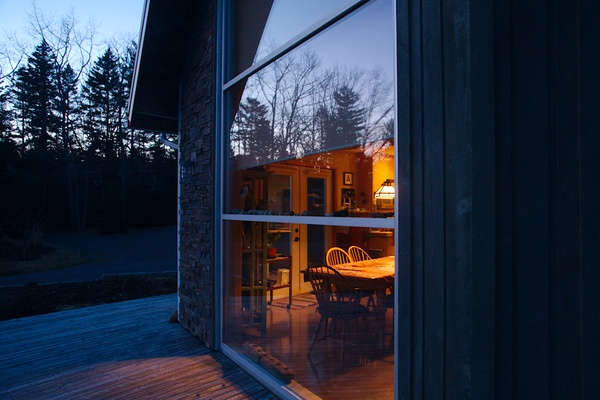
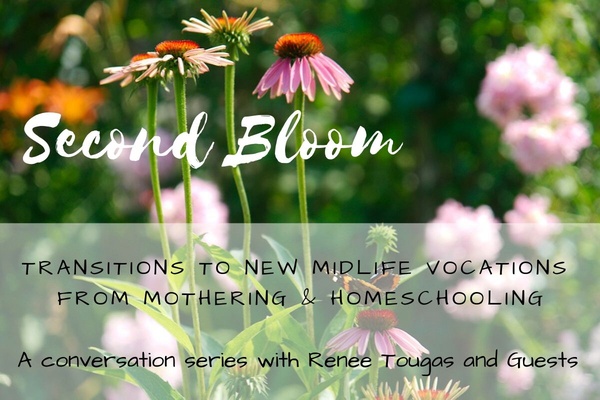
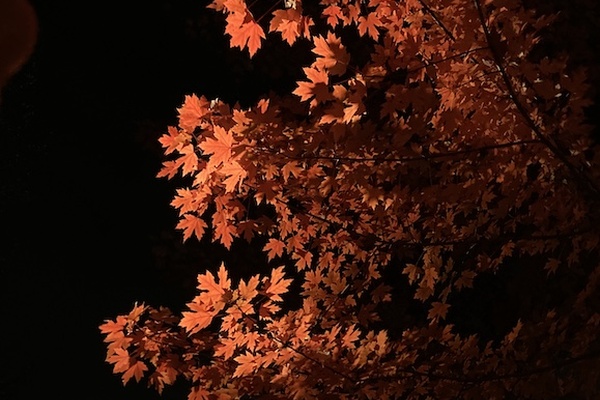
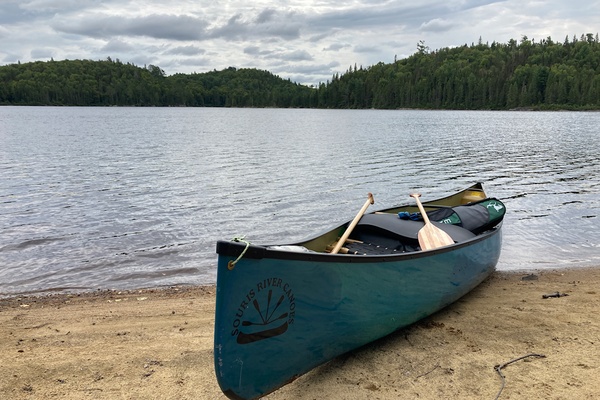
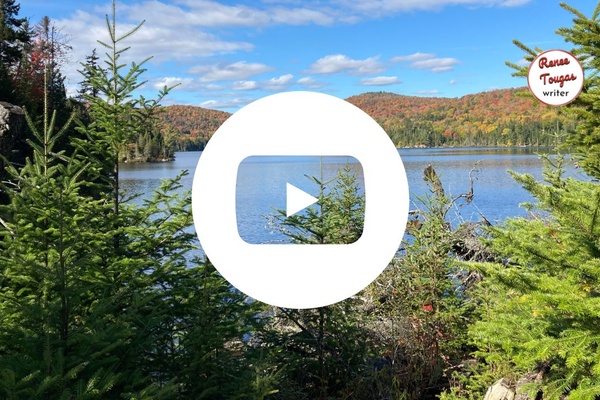

tara on Jan. 17, 2011, 12:20 p.m.
I have been wanting to try my hand a t soap making for at least 10 years. I can't wait to watch this video and who knows, I think it just might inspire me?
Claire on Feb. 21, 2012, 10:24 p.m.
This how I make my soap and it comes out pretty good http://howtofixstuff.blogspot.com/2012/02/how-to-make-soap.html